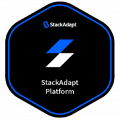In today’s fast-paced real estate world, new real estate agents are inundated with advice on how to boost their visibility—most of it digital. Instagram Reels and TikTok tours. Boosted posts to Google Ads. The online arena has become a thunderdome for attention. Social media algorithms and pay-per-click campaigns absolutely dominate lead generation conversations. While they can absolutely deliver results, they’re not the whole picture.
One of the most underrated yet effective real estate agent marketing ideas doesn’t require it’s own mobile app or a trending tiktok sound.
It just takes a grocery run.
It can be easy for newer agents, especially independents or those not tied to large brokerages, to dismiss physical or print marketing. It’s easy to assume that if a channel is not digital, it’s not scalable or relevant. The truth is, every marketing channel, print and digital, must work together to generate leads.
Real estate is, and always has been, a relationship business. That means trust, familiarity, and community presence matter more than clicks or impressions. You could be a master of social media and still be invisible to your local audience if you’re not showing up where they actually live and interact.
That’s where local marketing tactics come in—and grocery cart ads are a prime example. These aren’t merely ads. They are subtle, persistent reminders of your presence in the neighborhood. When someone sees your face week after week while picking up and bread orange juice, you become part of their routine—even if they don’t realize it. Then, when they see your name again on social media, in a closing photo, or on a yard sign, the connection clicks faster.
The truth is, the most powerful marketing strategies are rarely one-dimensional. The agents who win aren’t just active online—they’re visible offline too. And when digital engagement meets real-world familiarity, leads turn into conversations. Those conversations turn into closings.
The Digital Misunderstanding
Ask most modern real estate agents where they focus their marketing efforts, and you’ll hear the same answer: online. Social media platforms like Instagram, Facebook, and TikTok are packed with staging reels, listing walk-throughs, and celebratory closing posts. Agents pour time and money into boosted posts, online lead services, Google pay-per-click ads, and SEO-optimized websites, hoping to get seen in an increasingly crowded digital space.
There’s no denying that these tools have value. They can widen your reach, drive quick traffic to listings, and position you as a savvy, in-the-know professional. But there’s a catch:
Digital marketing is fragile.
Algorithms change. Ad costs fluctuate. Engagement drops. When your visibility depends on staying one step ahead of the next trend, it can feel like running on a treadmill set to max speed. This is the digital misunderstanding, the gap where many agents lose potential leads. Not because they’re doing anything wrong online, but because they’ve neglected to build a presence offline.
Real estate isn’t sold by clicks alone. It’s sold by trust, familiarity, and name recognition, especially within the neighborhoods you serve. Your latest Instagram post might earn a few hearts, but it won’t mean much if the people in your own ZIP code don’t even know you’re in the business.
That’s why local marketing for real estate agents still matters—more than most realize. People don’t buy homes from strangers; they buy from names they recognize and faces they’ve seen around town. And the more touchpoints you create in the real world, the more effective your digital efforts become. In essence, your online presence drives curiosity, but your offline visibility builds credibility.
This is where grocery cart ads can quietly—but powerfully—do their job. While agents hustle for digital reach, a smiling photo on a shopping cart is putting in work day after day, week after week. It’s not flashy, but it’s effective. And for those who think “print is dead,” the truth is: it’s just been waiting for a smart comeback.
Where Real Home-Selling Leads Come From
Scroll through any real estate agent’s Instagram feed. You’ll likely see it: a smiling photo of buyers holding a SOLD sign, arms around their agent, standing in front of a new home. It’s a milestone moment—and for many agents, it’s also a marketing play. That closing photo, once posted with a quick congratulations and a tag or two, becomes a starting point for one of the most coveted forms of lead generation: social engagement.
Here’s what often gets overlooked—the photo itself doesn’t convert leads. What converts leads is the engagement that comes after it’s posted. Comments, likes, shares, and especially tags from friends and family are what turn a simple celebration into a mini marketing campaign. When someone comments “So happy for you!” and a mutual friend replies, “Who’s your agent?”, the real magic begins. That’s the kind of organic interaction digital ads can’t buy.
This is why community management and real engagement are so valuable. It’s not enough to post and hope. Agents who respond to comments, join local Facebook groups, support small businesses, and stay active in community conversations are building a reputation that’s both personal and professional. These interactions may not feel like traditional marketing—but they are, and they’re often more effective than any lead magnet or drip campaign.
When this kind of engagement is paired with physical visibility, the effect multiplies. That moment of recognition lowers skepticism and builds instant trust. You’re no longer just an Instagram handle—you’re someone they’ve already “seen around.” That familiarity can be the difference between a scroll and a DM.
What’s really happening here is a mobilization of your network. When your community is familiar with your brand, they’re more likely to tag you. They’ll bring your name up when real estate comes up in conversation—which it does, constantly. But without that familiarity, those opportunities slip by.
Digital tools spark interaction, but social engagement and local presence keep your name circulating. Real leads don’t always come from clicks. They often come from conversations—and people don’t recommend agents they forget.
Grocery Cart Ads: A Local Presence That Sticks
In a business where name recognition is everything, grocery cart ads are more than just classic charm. They’re a form of ambient marketing that puts your brand quite literally in the hands of your potential clients. And in the neighborhoods you serve, that matters.
Where else can you get hyper-local visibility in front of hundreds of households, week after week, without paying for impressions, clicks, or ad fatigue? Grocery stores aren’t just busy—they’re community hubs. The people pushing those carts are often decision-makers, homeowners, future buyers, and the very folks who chat with neighbors about who just bought or sold a house. And unlike a social media ad that disappears in 24 hours, your grocery cart ad is there every time they shop. It becomes part of the scenery—part of their routine.
This kind of repetition builds a special kind of brand awareness. It’s not loud or invasive. It’s not fighting for attention. It’s just there—a steady reminder that you are active, established, and local. Over time, that quiet presence does something digital ads can’t always achieve: trust by association. You’re not some name they’ve never heard of. You’re the agent they “see everywhere.”
It also adds a level of perceived success. If someone sees your face on a cart at their local grocery store, they’re likely to assume you’re doing well enough to invest in your business. And if you’re doing well, that must mean people are working with you. Even if they don’t consciously process it, that kind of subtle social proof can work in your favor.
There’s also a psychological component. We tend to notice faces that become familiar. The first few times someone sees your cart ad, they may not register it. But after several exposures, they’ll begin to recognize you—even if they can’t place where from. That recognition builds a sense of comfort and credibility, which can prime them to engage more when they eventually see your name online, or hear it from a friend.
Grocery cart ads don’t require constant upkeep. You don’t have to post daily or monitor analytics. Once placed, they work passively in the background while you focus on closing deals and engaging online. In a world obsessed with going viral, sometimes the most effective move is being consistently visible in the real world.
How Cart Ads Support Social Engagement
Grocery cart ads and social media may seem like they belong in two different marketing worlds—but when used together, they create a powerful synergy. Think of your physical visibility as the primer, and your social media as the activation. One builds awareness; the other invites interaction.
When someone in your community sees your cart ad week after week, you begin to occupy a subtle space in their memory. You’re not just a stranger online anymore. You’re the agent they “recognize from somewhere.” So when they see a friend post a new home photo and tag you—or they scroll past your own closing post—they’re far more likely to stop, engage, and remember. That’s because real-world recognition gives online content instant credibility.
It also activates your network in a powerful way. When people feel like they “know” you—even passively—they’re more inclined to tag you when someone asks for an agent. This is how your local marketing starts working behind the scenes, mobilizing friends, followers, and past clients to organically refer you. Every tag, comment, or share turns your closing photo into a mini billboard that travels far beyond your own followers.
Even better, your physical presence gives people something to talk about. “Hey, I think I saw your ad at Hometown Market!” isn’t just small talk—it’s a conversation starter that opens the door to real engagement. These casual moments help nurture warm leads before you even meet them. You don’t have to pitch yourself—they already know who you are.
This blending of offline and online visibility also reinforces your branding. The tone, imagery, and messaging on your cart ad can match your digital presence, creating a unified identity. Whether someone’s shopping for groceries or scrolling on their phone, they’re seeing the same face, same logo, same agent—which makes your business feel stable, professional, and real.
Agents who treat c
art ads as part of a larger strategy—not a one-off gimmick—tend to get the most value. When done right, these ads amplify your digital content, giving you a leg up in the algorithmic world by rooting your brand in real-world recognition.
In short, cart ads don’t compete with social media—they support it. And in a crowded space where trust and familiarity make all the difference, every extra connection point helps.
Winning the Neighborhood, Not the Algorithm
For many agents, it feels like the entire game is online—playing to the whims of algorithms, studying engagement patterns, and constantly adjusting content in hopes of reaching the right audience. And while that’s important, it’s easy to forget that real estate is a local business. The person who hires you to sell their house or find their next one probably lives just a few miles away. They don’t need to be reached through complex ad funnels—they just need to know your name.
That’s why local marketing for real estate agents isn’t just “nice to have”—it’s essential. You’re not competing with agents nationwide. You’re competing with the handful of professionals whose names come up when someone in your community says, “Do you know a good real estate agent?” If you’re not top-of-mind in that moment, no amount of digital finesse will change the outcome.
And this is where the real power of cart ads—and other local visibility tactics—comes into play. You’re not trying to “go viral.” You’re trying to become familiar. Cart ads aren’t about mass exposure; they’re about being visible in the right place, to the right people, over and over again. That’s what builds recognition. And recognition builds trust.
There’s also a freedom in stepping outside the algorithm. While everyone else is obsessing over video length, post timing, and hashtag strategy, your cart ad is quietly working 24/7. It doesn’t require likes or shares to do its job. It’s not getting buried by a new post or outbid by a competitor’s budget. It simply exists—reliably, consistently, and visibly—in a place where your next client might be shopping tonight.
You don’t need thousands of impressions to win your next listing. You just need the right handful of people in your neighborhood to remember your face, your name, and your role. If you’re showing up at the grocery store, showing up in their feed, and showing up in conversation, you’ve already outplayed the algorithm.
Ultimately, the agents who thrive aren’t the ones who chase every new trend. They’re the ones who understand how to anchor themselves in the community—to build a brand that’s not only seen, but trusted. Cart ads, for all their simplicity, are one of the most cost-effective ways to do just that. In the battle for attention, consistency beats cleverness. And nothing says consistent quite like being part of someone’s everyday routine.
Coming to a Close
In a world dominated by digital marketing, it’s easy for real estate agents to overlook the quiet power of physical visibility. But success in real estate rarely comes from a single flashy tactic—it comes from showing up, over and over again, in the places your community already lives their lives. That includes social media, yes—but it also includes the grocery store down the street.
Grocery cart ads aren’t just advertising—they’re presence. They’re a subtle way of saying, “I’m your local expert,” without ever needing to say a word. When paired with thoughtful social engagement and smart community interaction, they reinforce your brand in a way that digital alone simply can’t. They don’t replace your Instagram account or your email list—they amplify them.
The best real estate agent marketing ideas are the ones that create a real connection. That’s why the agents who blend digital strategies with grounded, local tactics are the ones who rise above the noise. They don’t just chase the latest trend—they build a reputation that lasts.
So if you’ve been looking for a way to stand out, not just online but where it counts, consider this: your next client might already be pushing a cart. The question is—will they recognize you when they do?


 By IndoorMedia Marketing
By IndoorMedia Marketing
